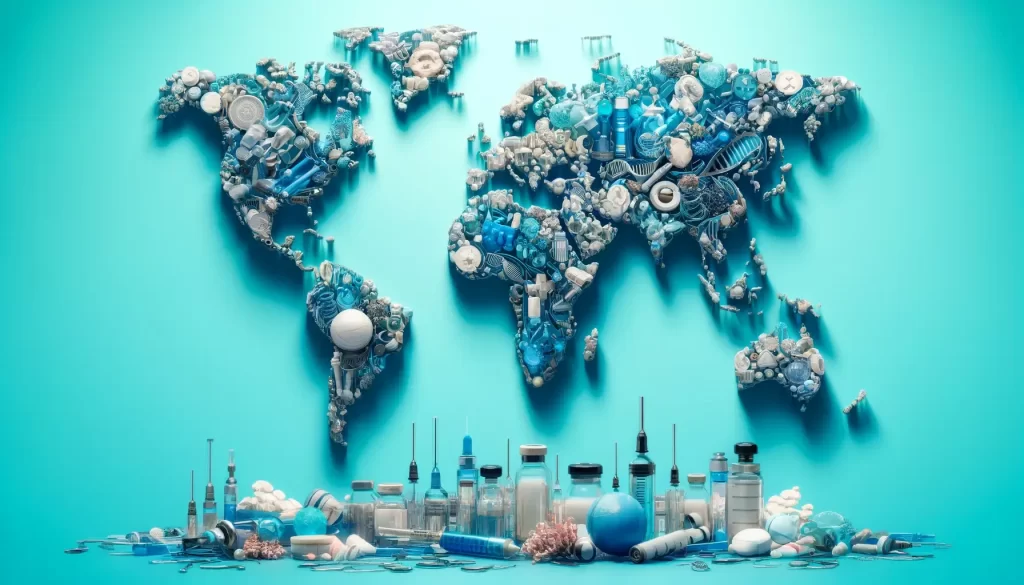The anticipated expiration of exclusivity rights for major biologics in 2022 was expected to open up possibilities for biopharmaceutical companies, provided that they could navigate the regulatory complexities around interchangeability, the risk of authorized biologics, and the entry of new competitors into the field.
2023 was a year of consolidation and delivery for many companies in the biosimilars sector. Major players such as Celltrion completed the merger of its affiliates, Biocon completed the integration of Viatris, and Sandoz completed the spin-off from Novartis and exited its Argentina and China business.
Considering the low biosimilar penetration, the question remains: what are biosimilar MNCs (multinational corporations) preparing for? The market will be more competitive with pricing pressures, especially from governments and payers. There is an industry-wide call to relax biosimilar guidelines, and several blockbusters are approaching LOE (loss of exclusivity).
Misconceptions hinder biosimilar medicine penetration. Favorable regulatory shifts could facilitate their adoption.
The global penetration of biosimilars remains low at 14%, with figures varying from region to region. There are still misconceptions regarding biosimilars, especially about safety and efficacy.
The biosimilars nocebo effect: Studies show that lack of awareness and poor patient education on biosimilars can lead to a nocebo effect. Patients who distrust a treatment report more side effects because when they are skeptical, they are more alert and tend to report more. With trusted therapies, patients associate some discomfort and even some AEs with efficacy and the drug “doing its job” and may underreport AEs. Though there can also be impurities from biosimilar manufacturers that may lead to AEs, many MNCs have addressed their manufacturing quality.
Overcoming regulatory barriers to biosimilar adoption: Several regulatory agencies are considering lowering regulatory barriers for biosimilar entry by removing the need for comparative Ph3 trials and arguing that robust Ph1, PK, and PD data are sufficient to prove biosimilarity. Candidates for a Ph3 biosimilar trial could benefit from being included in trials investigating novel biologics instead.
What we see in the biosimilar landscape in 2024
In 2024, we expect increased manufacturing market share from BRICS, policies creating a favorable environment for biosimilars, intensified competition, and further innovation. More specifically:
- China and India are expanding their presence
Chinese and Indian companies are gearing up their capabilities to target the US, EU, and emerging markets. Several have received cGMP certifications from the FDA and EMA, showing their commitment to quality and seriousness about becoming key players in these markets. Henlius Shanghai Biotech is among other Chinese companies looking to bring their innovative and biosimilar pipelines to the US.
- Favorable regulatory shifts
Policies are being introduced to create a more biosimilar-friendly environment globally. Governments have greatly emphasized education and awareness policies to ensure better uptake. Policies to increase the sustainability of biosimilars are in discussions, and decision-makers must walk the tightrope of pressure on lower costs vs. thriving healthy competition. MNCs must be content with providing a higher volume of biosimilars at lower prices.
- BRICS disrupting established players. Partnerships and innovation are on the rise.
Increasing alignment between BRICS countries and investments could disrupt the biosimilar industry, especially with China, India, and Brazil having the potential to address needs in emerging and developing countries. South Korea is expected to remain one of the leading manufacturers of biosimilars.
Several biosimilar companies will be forced to innovate to remain competitive, and formulation improvements and better treatment administration devices could achieve this. An indication of this trend is Celltrion’s agreement with RaniPill to develop a robotic capsule that will deliver adalimumab and ustekinumab biosimilars via injection into the small intestine wall.
As anticipated, the biosimilar industry will become more competitive. Chinese companies will lead the next wave of biosimilar and biologics development, addressing global demand and the capabilities to compete on price. Established MNCs will have to collaborate with local companies to achieve access to biosimilar markets in emerging countries, show flexibility in adapting to individual market needs, and be involved at the policy creation stage to ensure the sustainability of the sector.
Key Takeaway: New players from Asia and upcoming favorable policies to watch in the biosimilar sector in 2024
At LucidQuest, we anticipate that 2024 will be a year in which Indian and Chinese biosimilar development will become more prominent in North America and the EU and in which Latin American countries such as Mexico and Brazil will place a bigger emphasis on local production of biosimilars.
If sustainable practices are implemented, the biosimilar industry will still be profitable. However, there must be a clear separation from generic policy-making and engagement activities to prevent misconceptions that biosimilars are like generics.
Do you want to stay updated with the latest advancements in the biosimilars landscape?
Contact us and gain best-in-class market insights to help your brand thrive.
#biosimilars #biosimilarmedication #biosimilardrugs #biosimilaradoption #biosimilarity #biologics #drugpatent #patentcliff #biotech #biotechnology #adalimumab #ustekinumab#Celltrion #Biocon #Sandoz #Viatris #Novartis #HenliusBiotech #BRICS #FDA #EMA #ChinaPharma #IndiaPharma #ChinesePharma #AsianPharma #BRICS
https://www.henlius.com/en/NewsDetails-4391-26.html
https://www.henlius.com/en/NewsDetails-4292-26.html
https://www.henlius.com/en/quality-management.html
https://www.ncbi.nlm.nih.gov/pmc/articles/PMC10398229/
https://pharmaphorum.com/market-access/south-korea-emerging-global-leader-life-sciences
